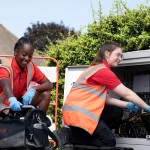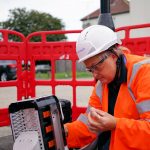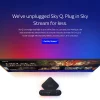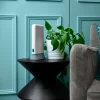BT Testing Co-Existence of G.fast and VDSL2 in up to 17.6MHz of Spectrum
One of the problems with BT’s new 330Mbps capable hybrid-fibre G.fast technology (ITU G.9700/9701) is that it can’t harness all of its spectrum (106MHz) because it needs to avoid interfering with the existing VDSL2 (FTTC) based “fibre broadband” service. But if they could co-exist.. speed boost.
At present the dominant VDSL2 (up to 40-80Mbps) service uses up to 17.664MHz of spectrum, while G.fast keeps its distance and uses spectrum between 19 – 106MHz in Openreach’s (BT) network. In this setup the two don’t have to worry about causing excessive interference and can operate alongside each other within BT’s network, but G.fast is clearly missing out on some performance.
The other problem is that both technologies use two different forms of half / full duplexing (i.e. the transmission of data in two directions, either asymmetrically or symmetrically). On the one hand VDSL2 uses Frequency Division Duplex (FDD), while on the other G.fast harnesses Time Division Duplex (TDD). Suffice to say that getting the two to co-exist within the same spectrum would be incredibly difficult, but perhaps not impossible.
Advertisement
Last year we became aware via the NICC, which is a technical forum for the UK communications sector that develops interoperability standards for related public networks and services, that BT was conducting a “ground breaking” technical study into the options for overlapping VDSL2 and G.fast spectrum up to 17.664MHz (slides). In December we got a little more detail on this, but haven’t been able to report it until now due to the intense amount of pre-Christmas work.
Apparently the key remaining problem is crosstalk interference from G.fast into VDSL2 and to what extent this difficult but predictable non-stationary crosstalk could be mitigated. Some readers may recall that crosstalk on VDSL2 (FTTC) broadband lines occurs where lots of active copper lines would effectively create interference for one another, thus Vectoring was introduced and this works a bit like noise cancelling headphones (i.e. it coordinates the copper line signals in order to remove most of the interference).
Some of our readers may recall that Vectoring had a troubled birth on Openreach’s VDSL2 lines and a variety of problems meant that it has only ever been implemented in certain very specific / busy areas (i.e. where the problem is quite acute), which can help to return FTTC speeds to more normal levels (here). By comparison Vectoring has been built into G.fast by default and works much more smoothly.
However BT’s technical bods are aware that true co-existence like this probably cannot be achieved without some trade-off in VDSL2 performance, although this assumes that the operator would stick with a purely static approach to spectrum management. We understand that BT is also looking at either a semi-static or dynamic option, although the latter might be too complex to implement.
Advertisement
At present all of this is still subject to on-going work and no final decisions have yet been made (each approach will require a complexity vs. benefit analysis), although the impression we get is that co-existence may soon become a very real thing and this would then be followed by a related update to BT’s Access Network Frequency Plan (ANFP) and guidelines. The result could be a nice speed boost for G.fast and perhaps a slight improvement to coverage.
So far as we’re aware BT appear to be the only operator that is currently considering all of these different techniques / options together and if they can pull it off then it would be a technically very impressive feat, although much may depend upon the penalty it introduces to VDSL2 performance (nobody likes to lose broadband speed).
The group is being conducted by BT’s Head of Access Platform Innovation, Kevin Foster, who is also Chairman of NICC’s DSL Task Group.
Mark is a professional technology writer, IT consultant and computer engineer from Dorset (England), he also founded ISPreview in 1999 and enjoys analysing the latest telecoms and broadband developments. Find me on X (Twitter), Mastodon, Facebook, BlueSky, Threads.net and Linkedin.
« The Name is Bond, Broadband ISP TalkTalk Looks to Borrow £300m


















































Comments are closed